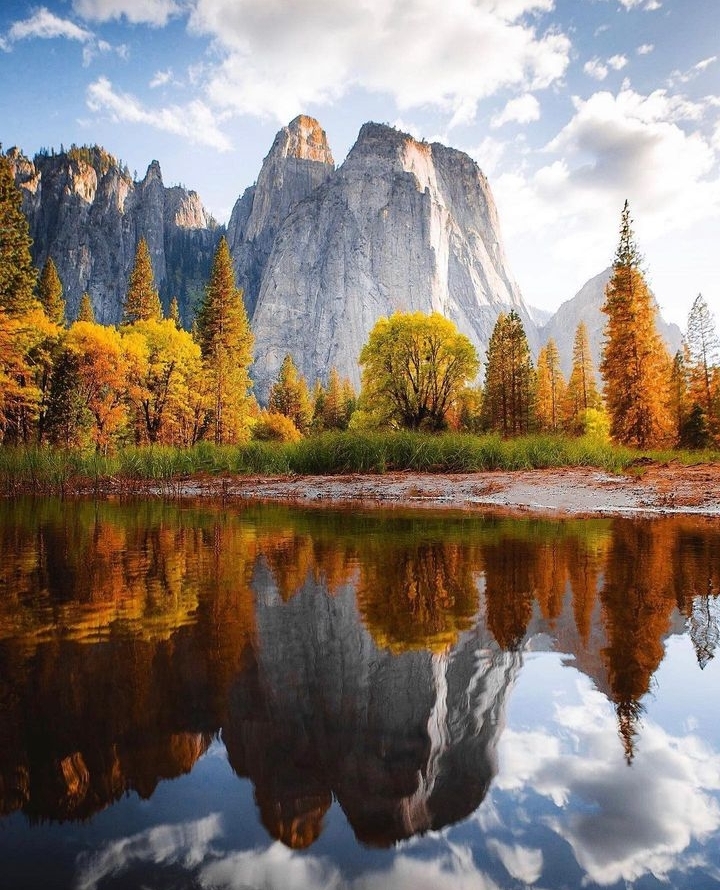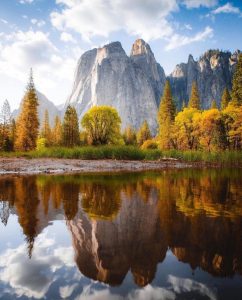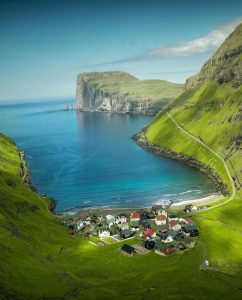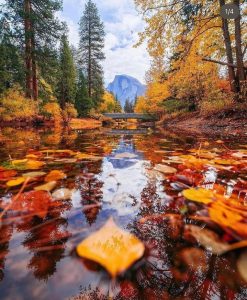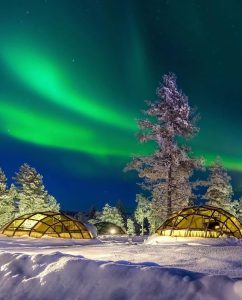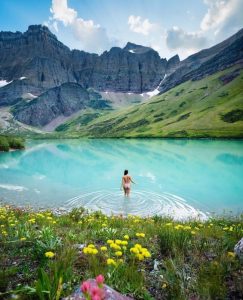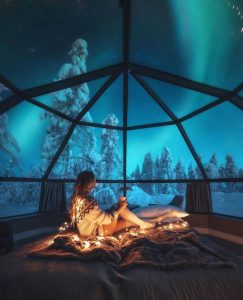Last Updated on December 5, 2023 by Sharon Advik
Are you diving into the world of landscape photography?
You’re in for a treat! Now, imagine standing atop a rolling hill, the golden hour light playing peekaboo through the clouds.
The scenery’s perfect; you only need the right lens to capture it.
But, with the vast sea of options, which lens should you pick for your Canon?
You want sharpness, versatility, and something that won’t break the bank.
I know this struggle, so I have the lowdown on the best lens for your Canon that’ll turn your landscape shots from “meh” to “wow!”
Ready to get started with the Best Lens for Landscape Photography Canon?
Which is the Best Lens for Landscape Photography Canon?
Here are my recommended top 9 Best Lens for Landscape Photography Canon:-
Canon RF 24-70mm F2.8L IS USM: (Best all-around landscape lens)
Here is my story about my sunrise adventure in the Scottish Highlands.
There I was, up before the birds in the cold Scottish Highlands, determined to capture that fleeting moment when the first ray of sunlight kisses the peaks.
I felt the anticipation building as I adjusted my Canon RF 24-70mm F2.8L IS USM.
This wasn’t just another shoot; it was a connection between my standard zoom lens and the world around me.
Excellent Resolution
The Highlands are rich in texture, from the rugged rocks to the velvety moorlands.
With its three aspherical and ultra-low dispersion elements, the lens effortlessly brought out every detail.
Looking at the shot, you can almost feel the morning air’s crispness and the stones’ roughness.
That’s the kind of resolution I am talking about.
Quick, Quiet Autofocus
Let’s be honest; the Highlands can be a challenging place.
Wildlife can appear out of nowhere.
That’s where the Nano USM AF system came into play.
It was snappy and discreet, ensuring I didn’t miss a beat or scare away a skittish deer that wandered into the frame.
The photo of the eagle I shared last month on my social media page was also taken by this lens.
Outstanding Hybrid Stabilization/1:3 Macro Focus
Have you ever tried capturing the dew on a thistle at dawn? The lens’s hybrid stabilization was a game-changer.
No more shaky hands ruining macro shots!
The 1:3 macro focus allowed me to get up close and personal, turning ordinary scenes into extraordinary masterpieces.
Why this lens is best for landscape photography with Canon?
Beyond its technical prowess, this lens is built for the wild.
Dust and splash protection? Check. Anti-smudge? Double-check.
Even in the unpredictable Scottish weather, the fluorine coatings ensured clarity, while the customizable control ring gave me the flexibility I needed in rapidly changing conditions.
When battling the elements, this lens ensures your Canon camera becomes an extension of you.
Conclusion
From the mesmerizing Highlands to the busy streets of Tokyo, the Canon RF 24-70mm F2.8L IS USM is the best all-around landscape lens.
Its impeccable resolution, silent autofocus, and unparalleled stabilization capabilities ensure I never miss a moment.
And with its robust protection against nature’s whims, I can confidently venture anywhere.
If you’re serious about landscape photography, this is the lens you’ve been dreaming of.

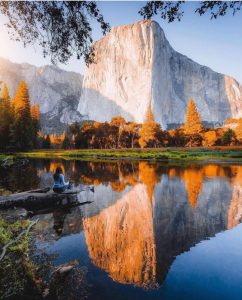
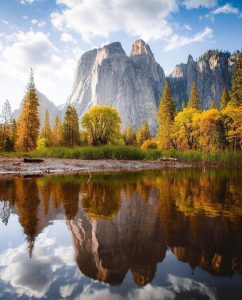
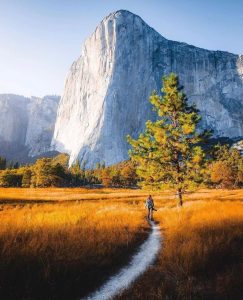

Canon RF 70-200mm F2.8L IS USM: (Best lens for landscapes with scale)
I was in Alaska, chasing the AuroraAurora, waiting for that magical moment.
The forecast said tonight would be the night.
I set up on a frosty hill overlooking a serene lake.
Fingers numb but excitement warm, I prepped my camera, ensuring it was paired with that reliable lens.
The green streaks started slow, then danced vividly across the sky.
Each burst of the AuroraAurora was captured in breathtaking clarity, a dance of light and landscape with my Versatile Telephoto Zoom Lens.
And it was none other than Canon RF 70-200mm F2.8L IS USM.
Excellent Optics/Optical Stabilization
Have you ever tried photographing a celestial spectacle with a sub-par lens? Nightmare.
But with the two aspherical elements and the Super UD element, every star and hue of the AuroraAurora was accurately reproduced, making my heart sing.
Shaky hands from the cold? Not a problem.
The optical image stabilizer ensured each shot was as steady as if I were in a cozy studio.
1:4.3 Macro Focus
Now, it wasn’t all about the skies.
Alaska’s icy landscapes provide incredible close-up opportunities.
Frost patterns on leaves, intricate ice shards – the 1:4.3 macro focus brought them alive in surprising detail.
It transformed tiny wonders into grand visual tales.
Who knew a macro could make you feel so macroscopic?
Smallest of its Type
Hiking up Alaskan terrains with gear isn’t a walk in the park.
Every ounce matters.
And this lens? A godsend.
Not only was it delivering stellar results, but it was also the most compact in its category.
A heavyweight performer without the weight.
From the vast expanses of the Alaskan skies to the minute details in its landscapes, it never missed a beat.
Why this lens is best for landscape photography with Canon?
Alaska’s unforgiving.
It’ll test you and your gear.
But here’s the deal.
This lens isn’t just about impeccable images; it’s built to last.
Dust storms or unexpected splashes by the lakeside, it’s ready.
The fluorine coatings? Say goodbye to smudges and hello to crisp shots every single time.
Trust me, this lens feels less like equipment and more like a trustworthy companion when you’re out there.
Conclusion
Alaska was a dream and the lens? A dream enabler.
Sturdy, reliable, and delivering top-notch performance every time, it stands out as a jewel in Canon’s crown for landscape lovers.
So, if you’re looking to up your game and capture the world in its raw, magnificent splendor, you know this best lens for landscapes with scale.

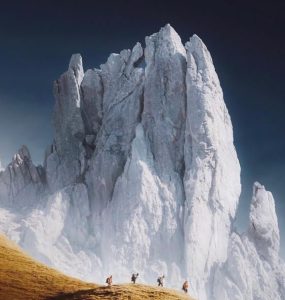
Canon RF 100-500mm F4.5-7.1L IS USM: (Best long landscape lens)
Have you ever had one of those moments where the world stands still?
I found myself in the vast plains of the Serengeti, trying to capture a distant pride of lions lounging under an acacia tree.
With every step closer, I risked disrupting the serenity.
That’s where the magic of the short to super telephoto range lens truly shone.
I zoomed, focused, and captured that perfect, undisturbed wilderness moment with Canon RF 100-500mm F4.5-7.1L IS USM without moving an inch.
Sharp Telephoto Optics
Distance can often be a photographer’s greatest adversary.
In the wild expanses of Africa, the lens bridges the gap.
One Super UD element and six UD elements translate to vibrant colors and sharp contrasts.
Whether it was a cheetah sprinting or a bird taking flight, every frame was a crisp and clear memory, immortalized.
Adjustable Zoom Tension/Supports Hybrid Stabilization
The Serengeti is unpredictable.
One moment, you’re capturing a herd of elephants on the horizon, and the next, you’re zooming in on a lizard sunbathing on a rock.
The rotating zoom ring with torque adjustment was a lifesaver, letting me smoothly transition between scenes.
And with the hybrid stabilization?
Even in the gusty African winds, my shots were as stable as if I were shooting indoors.
1:3 Macro Focus
Now, it’s not always about the vast landscapes or majestic animals.
Sometimes, the dew on a spiderweb or the intricate patterns on butterfly wings steal the show.
Bringing out the beauty in these minute details was a breeze, thanks to the lens’s incredible 1:3 macro focus.
A whole new world, captured in its stunning intimacy.
Why this lens is best for landscape photography with Canon?
When you’re on the move, every piece of gear counts.
The lens’s lightweight design meant less fatigue and more shooting.
And the removable tripod collar is a stroke of genius for those moments when you need stability without the bulk.
Combined with its weather-sealed design and fluorine coating, I had peace of mind, come rain or shine.
Conclusion
The Serengeti trip was an experience of a lifetime.
And the lens was the silent hero, capturing moments from the vast plains to the tiniest wonders, never missing a beat.
If you’re looking to embrace the world of landscape photography, this is your trusty companion.
With this best long landscape lens in your arsenal, the world becomes a canvas waiting for your next masterpiece.
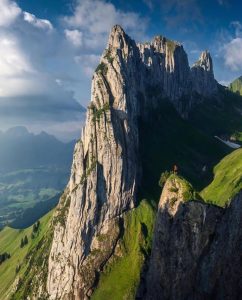
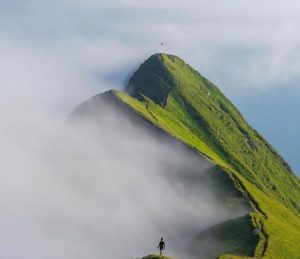
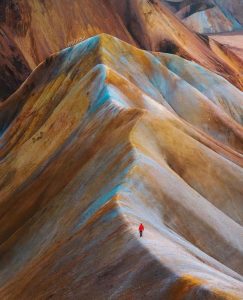
Canon RF 15-35mm F2.8L IS USM: (Best wide-angle landscape lens)
Last summer, I found myself in the cliffside villages of Santorini, Greece.
Each evening, the skies transformed into a splash of gold and crimson.
I wanted to soak in every bit of that panoramic view, and that’s when my wide-angle zoom lens proved to be a game-changer.
With a twist and a click, I captured the sun kissing the horizon, the pristine white houses, and the shimmering Aegean Sea, all in a single frame.
Say hello to Canon RF 15-35mm F2.8L IS USM.
Wide Zoom with Fixed f/2.8 Aperture
If you try capturing the vastness of the Grand Canyon or the sprawling cityscapes of New York, you need width.
But here’s the catch: You also need consistent lighting across that width.
That’s where a fixed f/2.8 aperture shines.
Whether I was capturing the early morning hues or the twilight shadows, it delivered brilliantly lit shots every single time.
Excellent optics
When you’re capturing wide, every little detail counts.
That one far-off ship or a distant flock of birds can elevate your shot.
With aspherical and low dispersion elements, I could trust this lens to give me sharp, color-rich photos.
Distortions? Virtually non-existent.
Every stone, every ripple in the water, and every cloud stood out, lifelike and crisp.
Threaded Filter Support
I love experimenting, don’t you?
Adding a polarizer or ND filter became a breeze with the threaded filter support.
And the difference it made!
The skies turned deeper, reflections were controlled, and I got longer exposures without overexposure.
It’s like having a magic wand that fine-tunes reality.
Why this lens is best for landscape photography with Canon?
Landscape photography is not a walk in the park.
Sometimes, it’s a trek in the rain or a desert expedition.
You need gear that can keep up.
The pro-grade build of this lens ensures it won’t let you down.
With its top-notch weather protection, be it rain, dust, or the occasional splash, your lens stays protected.
And the fluorine coating is a blessing for those smudgy fingerprints or surprise drizzles.
Conclusion
My Santorini escapade was an ode to the grandeur of nature and architecture.
I narrated a story with every click, and my wide-angle lens was my most trusted storyteller.
For anyone passionate about landscapes, investing in the right lens can make the difference between a good photo and an unforgettable masterpiece.
And with this piece of the best wide-angle landscape lens, every shot will be the latter.
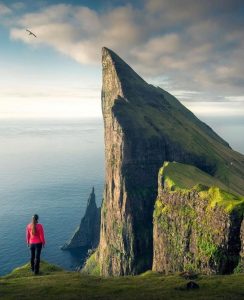

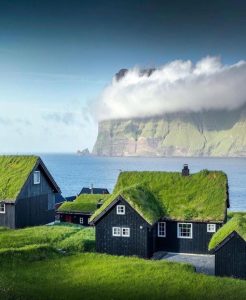
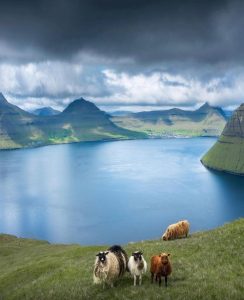
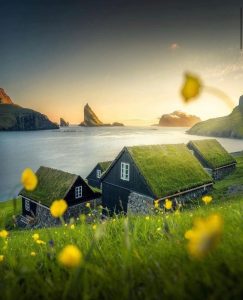
Canon RF 14-35mm F4L IS USM: (Best wide-angle landscape lens)
My backpack was my lifeline during a winter trek across the vast Icelandic plains.
I needed equipment that wouldn’t weigh me down yet was versatile enough to capture the grandeur of Iceland.
That’s when I slipped out my trusty wide-angle zoom lens.
As the Northern Lights danced across the sky and the massive waterfalls roared in the background, this Canon RF 14-35mm F4L IS USM was my ticket to encapsulating Iceland’s untamed beauty in wide, glorious frames.
Small for an Ultra-Wide Zoom
Hood things come in small packages, well, it’s true.
Its compact nature surprised me for a lens with such a wide scope.
Trekking through the rugged terrains of Iceland, lesser weight meant more stamina.
And trust me, every ounce counts when you’re hiking for hours.
This lens was a revelation: big on performance, easy on the shoulders.
Quick, Quiet Autofocus
Imagine this: A wild Icelandic horse grazing, a curtain of misty rain behind it.
I sneak closer, not wanting to disturb the serene scene.
The lens was silent as a whisper; it focused.
There are no noisy interruptions, just pure, candid shots. And the speed?
Blink, and it’s done.
That’s the power of the Nano USM AF System for you.
Nominal Focus Breathing/Focuses Close for 1:2.6 Macro
Have you ever been frustrated with that shift in the angle of view while adjusting focus?
I’ve been there. But with this lens, what you see is what you get.
Minimal focus breathing, which is a gem for videos.
And the macro – I was capturing frost patterns on leaves with the kind of detail that makes you appreciate the beauty in the small things.
Why this lens is best for landscape photography with Canon?
Landscape photography is raw.
You’re at the mercy of Mother Nature.
Rain, dust, or an accidental splash from a waterfall, things can get messy.
That’s where the trifecta of protection – dust, splash, and fluorine coating – comes into play.
Your lens stays clear, clean, and ready, no matter the conditions.
It’s not just about taking pictures; it’s about immersing yourself in the environment without worry.
Conclusion
By the end of my Icelandic journey, I had more than just memories.
I had frames that spoke of the plains’ vastness, the auroras’ shimmer, and the intricate details of frosted leaves.
It wasn’t just about a lens; it was about a companion that understood the nuances of landscape photography.
Look no further for anyone looking to dive deep into the world of landscapes with a lens that’s both a workhorse and a marvel.
Here’s to the best wide-angle landscape lens.
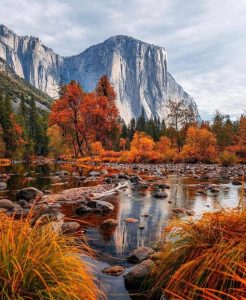
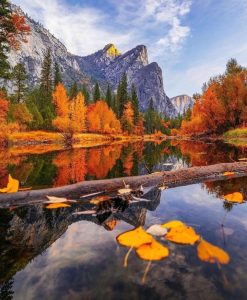
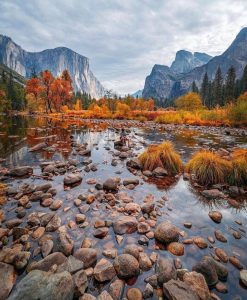
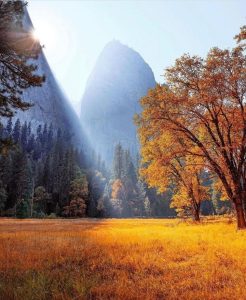

Canon RF 16mm F2.8 STM: (Best entry-level wide-angle lens for landscapes)
Strolling through Rome’s ancient, cobblestoned streets, I was set on capturing its antiquity from a fresh perspective.
The grandeur of the Colosseum and the bustling Piazza Navona have all been snapped a million times over.
But with my wide-angle prime lens in hand, I was about to change the narrative of urban landscape photography.
I was chasing shadows, the elongated silhouettes created by centuries-old monuments against the cobbled streets, offering a dance of light and dark with my Canon RF 16mm F2.8 STM.
It’s an entry-level lens, but man, did it help me craft stories in every frame.
I was painting with light and shadow, capturing the eternal city in ways that make postcards blush.
Ultra-Wide Angle of View
Fitting the massive Colosseum into one frame without standing a mile away is tough.
This lens made me forget about its entry-level tag.
It turned tight spaces into panoramic spectacles.
Do you need to be a pro to capture Rome like a local? Think again.
I was up close, capturing the monument and the life that buzzed around it.
People chatting, pigeons fluttering – it was the Colosseum as a part of Rome, not just a relic of the past.
The ultra-wide perspective made all the difference.
Sharp, Colorful Imaging
Rome isn’t just about its architecture; it’s about vibrant life, colorful markets, and gelato stalls.
And let me tell you, the colors this lens could capture were no short of spectacular.
If you think entry-level means compromising quality, let this lens change your mind.
From the freshest greens at Campo de’ Fiori to the rich terracottas of Roman rooftops, every hue popped, sharp and true.
Hybrid Manual Focus/Control Ring
Do you ever have those moments where you need to switch between settings quickly?
The bustling Roman streets demanded it.
Whether I was adjusting the focus manually to get that crisp shot of a Vespa whizzing by or using the control ring to tweak settings on the fly, this lens was always one step ahead.
A true partner in crime on those Roman escapades.
This entry-level lens is not essential, whether it’s focus, aperture, or shutter speed.
Why this lens is best for landscape photography with Canon?
Imagine having top-notch quality without burning a hole in your pocket.
Yes, this lens offers just that.
It’s incredibly affordable, meaning less money for high-quality features!
And its slim, lightweight form is perfect for those long treks around the city.
They are no longer lugging around heavy gear.
You have a travel buddy that doesn’t require pro skills but performs phenomenally well.
Conclusion
As I packed my bags, leaving behind the city of gladiators, poets, and artists, I had memories captured in wide, colorful, and sharp frames.
This journey was seen through a lens that understood the soul of landscape photography.
This lens may be entry-level, but the shots?
They tell a different story.
So, if you’re ready to up your photography game without burning your wallet, look no further and dive right into this best entry-level wide-angle lens for landscapes.
The ancient world, after all, has many more shadows to chase.
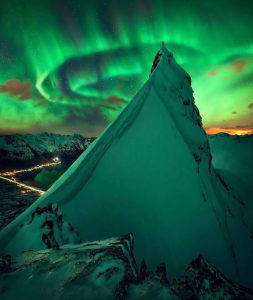

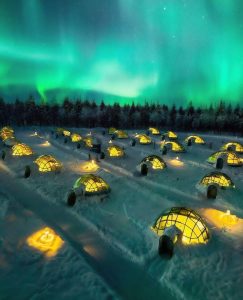
Canon RF 15-30mm F4.5-6.3 IS STM: (Best entry-level wide-angle lens for landscapes)
In the dense woodland of the Black Forest in Germany, I had my Canon RF 15-30mm F4.5-6.3 IS STM, and I was ready to delve deeper into this fairytale.
As an entry-level lens, it’s just the thing you need to dive deep into landscape photography without going broke.
Mist threaded its way between ancient trees, and distant waterfalls murmured secrets.
Most photographers aim to capture its vastness, but I had a different mission.
I wanted intimacy, the quiet conversations between nature’s elements.
With my ultra-wide zoom lens, I ventured close, making the expansive forest feel like an intimate chamber of nature’s wonders.
The Aperture Adjusts Quietly and Smoothly
I tried capturing a timid deer sipping from a brook; it was a moment so fragile that even the slightest noise could shatter it.
That’s where this lens truly performed.
Whether I was transitioning from the dark canopy to a sunlit clearing, the aperture’s smooth adjustment was my silent partner.
It let me work without disturbing nature’s harmony.
Excellent Sharpness
Every dewdrop, every feather on a resting bird, every delicate fern – this lens caught them with striking clarity.
In a place where details whispered tales of time, having a lens that could etch out those minute stories made all the difference.
The sharpness was impeccable, from bark textures to the intricate patterns of a spider’s web.
The RF-Mount and Full-Frame Format ensure your photos have that pro look.
Optical Image Stabilization
Light can be a playful trickster, darting and hiding deep in the forest.
This often meant slower shutter speeds for me. But worry not!
The lens’s optical image stabilization was a game changer.
Even as I treaded on uneven forest floors or balanced on slippery stones, my shots remained steady, capturing the forest’s stillness amidst its quiet movements.
You could be a total newbie; still, your shots would look like they were taken with a steady hand.
Why this lens is best for landscape photography with Canon?
So why should you, an emerging photographer, opt for this lens?
It’s a full-frame lens, giving you a full view of the grandeur of landscapes.
Its wide aperture range, from f/4.5 to f/32, provides versatility for both broad views and minute details.
UD and Aspherical Elements work in harmony to reduce aberrations, making your images clearer and more vibrant.
And the Super Spectra Coating ensures your shots are free from flare and ghosting, especially in tricky lighting.
The STM Stepping AF Motor, with its 1:2 magnification, lets you go up close and personal, while the Optical Image Stabilizer ensures your stories remain unshaken.
Conclusion
As I emerged from the Black Forest, my collection wasn’t just of photos but of tales – the silent song of a waterfall, the soft gaze of woodland creatures, and the timeless whispers of trees.
If you want to delve deep into landscapes to capture sights and emotions, this best entry-level wide-angle lens might be your next companion.
After all, every landscape has secrets; with the right lens, you might hear them.
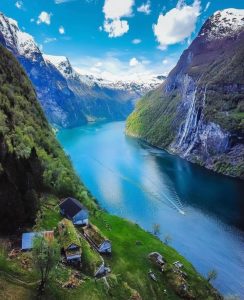
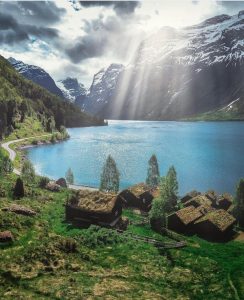
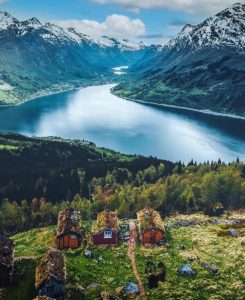
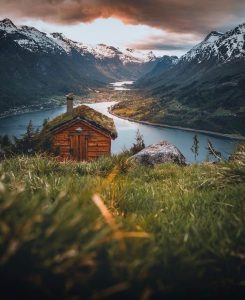
Canon RF 24mm F1.8 MACRO IS STM: (Best entry-level wide-angle lens for landscapes)
I still recall that day in Pamukkale, Turkey, where nature had crafted terraces of shimmering white cascades.
These weren’t your typical cascades but thermal springs that have, over time, created stunning travertine terraces.
With my trusty macro, Canon RF 24mm F1.8 MACRO IS STM lens, I wasn’t just capturing the panoramic wonder of these terraces; I was delving into the intricate details, the minuscule bubbles in the thermal waters, the sediments’ textures, and the playful dance of light on each droplet.
The lens is ideal, but don’t let the “entry-level” tag fool you.
Fairly Sharp into the Corners
How do you do justice to such a surreal landscape? You capture every nuance.
And that’s precisely what the Canon RF 24mm F1.8 MACRO allowed me to do.
For an entry-level lens, the optical performance is beyond impressive.
From corner to corner, the images were razor-sharp.
So, when you looked at the photos, you could see the rough texture of the terraces contrasted with the smooth, serene water pools.
Shallow Depth-of-Field Effects
If you’re new to the photography game, playing with depth-of-field can be intimidating.
But this lens makes it easy with its f/1.8 to f/22 aperture range.
You can get dreamy, out-of-focus backgrounds without needing a film school degree.
These shallow depth-of-field effects gave the foreground sharp relief, blurring out the distractions.
In Pamukkale, a single droplet or a unique mineral formation was the star, surrounded by a creamy bokeh that made it pop.
Broad Coverage
Pamukkale’s terraces stretch wide, and you’d think you’d need to step back to take it all in.
But with the 24mm lens, I got broad coverage, making the vast expanse feel intimate.
I could stand at the edge of a thermal pool and capture its entirety with the horizon still in view.
What’s better for a beginner than a lens that forgives and enhances your framing mistakes?
Why this lens is best for landscape photography with Canon?
Landscapes demand versatility, especially if you are new to landscape photography; things can get complicated.
The RF 24mm delivers with an aperture range from f/1.8 to f/22, letting you play with light in myriad ways.
The Super Spectra Coating ensures that each shot is free from flare and ghosting, even under the harsh midday sun of Pamukkale.
With its STM Stepping AF Motor, the focus was silent and swift. Want to get up close?
With a 1:2 max magnification and a minimum focus of 6.7″, you can capture the tiniest details of the landscape.
And should your hands waver a bit from the sheer awe of the view, the Optical Image Stabilizer has got you covered.
The customizable control ring lets you feel like a pro, even if you’re not there yet.
Conclusion
Pamukkale is more than just terraces and thermal waters.
It’s a testament to nature’s artistry.
And to capture its soul, you need more than just a camera; you need the right lens.
As I packed up, I knew I had stories that weren’t just wide-angle shots but tales of droplets, textures, and shadows.
Thanks to this best entry-level wide-angle lens.


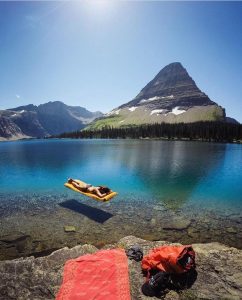

Canon RF 35mm F1.8 MACRO IS STM: (Best close-focusing lens for landscapes)
Banff. The very name brings chills of excitement.
The majestic peaks kiss the heavens, serene lakes reflect azure skies, and wildflowers dot the meadows like nature’s confetti.
On one chilly morning, with dew kissing every leaf and petal, I was right there with Canon RF 35mm F1.8 MACRO IS STM, trying to capture the grandeur and the intimate details of the park.
It wasn’t just about the towering peaks and the tiny dewdrops reflecting a world within.
Crisp Optics
For capturing the reflection within a dewdrop or the intricate details of a snowflake, you need a lens that doesn’t just see but observes.
The clarity I achieved using this wide-angle macro lens was unmatched.
Every image was a poem of details, a story waiting to be told.
The lens missed nothing from the rugged mountain textures to the delicate patterns on butterfly wings.
1:2 Macro Reproduction/Optical Stabilization
You might wonder, how could I go so close yet keep everything so sharp?
The 1:2 macro reproduction capability of the lens brought the world closer than ever.
And did my hands shake in the chilly Banff breeze? They did.
But the optical stabilization ensured that each shot was steady, making those dewdrops look like perfect crystal balls.
Bright Aperture
Banff’s beauty doesn’t dim when the sun goes down.
As night approached and the stars began their dance, the lens with its bright f/1.8 aperture became my best ally.
It sucked in all available light, making nightscapes look ethereal. The auroras?
They looked like they were painted by nature just for my lens.
Why this lens is best for landscape photography with Canon?
Landscape photography isn’t just about wide sweeps of land and sky; it’s also about the stories hidden in the details.
With an aperture range stretching from f/1.8 to f/22, you can control whether it’s a starry night or a sunlit day.
The Super Spectra Coating ensures colors pop and remain true.
The STM Stepping AF Motor works silently, quickly, and precisely.
Want to focus on the unexpected?
The lens’s 1:2 max magnification brings it up close and personal, while the Optical Image Stabilizer ensures clarity.
Plus, with such an attractive price, it’s a steal for every photographer, amateur or pro!
Conclusion
Banff was an experience, a story waiting to be told.
While many lenses let you capture its vastness, the intimate details make the narrative complete.
Through the lens, I didn’t just see Banff; I felt it, one macro shot at a time.
And for anyone keen on capturing landscapes in their full glory and detail, this best close-focusing lens for landscapes is your storyteller.
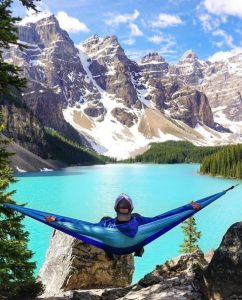
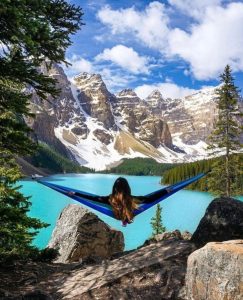

CONCLUSION:
Alright, guys, that concludes all the lenses we will discuss today in this article.
Do you guys have any experience with these lenses? What are your thoughts on them?
Which is your best lens for landscape photography Canon?
Is there a lens I didn’t mention in this article that you love using for landscape photography?
Would you please leave your thoughts and comments below?
Related posts:
Best mirrorless cameras for landscape photography:
17 Best walk around Lenses for Canon: (2021 Guide & Reviews)
I am a Professional and Certified Digital Photographer born in the USA. I have been in this field of photography for 22 years, and in these years, I have used many photography lenses and Cameras, which I want to share here on this website about my experience. The idea for Bestoflens.com is to provide honest information about different Lenses and Camera products in the format of a “Best lenses for AYZ” list. I want this website to be the last destination for people to pick the best Cameras and lenses to fit their needs. You can find our unbiased reviews here on Bestoflens.

